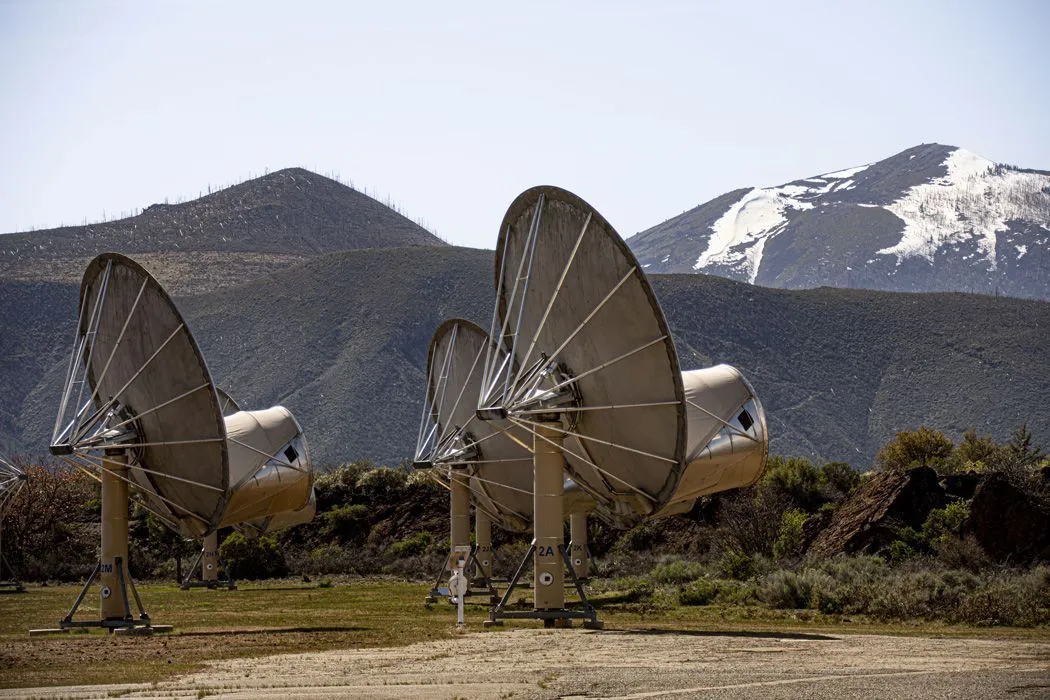Where should we look for aliens?
For more than 50 years, the usual answer has been ‘among the stars’, with the search for extraterrestrial intelligence (SETI) focused on scanning the skies with large radio telescopes.
That might be changing, as a new generation of SETI experiments and scientists join the hunt.
Some want to look for alien artefacts in the Solar System, a plan sure to appeal to anyone who remembers 2001: A Space Odyssey’s sinister black monolith.
The trouble is that there is a lot of Solar System to investigate, and so it helps in your search if you have some idea of what the aliens might be up to.
For more on SETI and UFOs, read our guides on the Roswell Incident and things commonly mistaken for UFOs.

The authors of one paper on the subject start with the idea that any alien probes exploring our neighbourhood would need to report back to their home system.
Doing that, though, is hard, requiring what is presumably a modest probe to use an enormous amount of power to send a detectable signal over interstellar distances.
Any sensible alien spacecraft engineers would look for a shortcut.
Luckily, they should know that radio waves, like any electromagnetic radiation, can be lensed and magnified by the Sun’s gravity.

Position a probe about 500 times the Earth–Sun distance behind the Sun, exactly in line with your home star, and it should be possible to get a report on Earth’s status back home with transmitters not much more powerful than those our own spacecraft carry today.
If we pay attention when Earth crosses the region between the Sun and a target star, looking for any stray signals with radio telescopes, we might be able to eavesdrop on their communications.
This paper, the result of a summer project for some lucky undergraduates at Penn State University’s SETI centre, used the Green Bank Telescope in radio-quiet West Virginia to do just that.
How to find a genuine extra terrestrial signal

As ever with a SETI project, the biggest problem is distinguishing what might be an artificial transmission from all the noise and clutter generated by our terrestrial civilisation.
In this case, we expect the source of a real signal to be close to stationary relative to the Sun, so we can pay attention only to those signals.
A few candidate events are found in both the frequency bands that the astronomers targeted, but close inspection shows them to be false alarms.
The brightest in a range of frequencies known as the L band, for example, seems to be chatter from an Iridium communications satellite.
Despite this non-detection, the technique has promise. After all, it’s only one set of observations.

Perhaps our beacon reports to the Alpha Centaurians only once a week, or once a year. Or perhaps Alpha Centauri is the wrong target.
Could the Zeta Reticuli system be the place to look, if many UFO theories are to be believed?
It’s possible, the authors say, to imagine an interstellar communications network, with relay satellites positioned throughout the Galaxy to forward messages via gravitational lensing.
In such a system, multiple star systems like Alpha Centauri, with its two bright components plus faint Proxima, are poor choices, forcing their beacons to adjust position constantly as the stars move.
Much better to look for signals pinging between nodes anchored on more boring stars – just like our Sun. We should probably keep looking.
Chris Lintott was reading A Search for Radio Technosignatures at the Solar Gravitational Lens Targeting Alpha Centauriby Nick Tusay et al.
Read it online at: arxiv.org/abs/2206.14807
This article originally appeared in the September 2022 issue of BBC Sky at Night Magazine.
